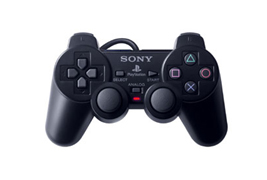
We just reviewed the evolution of the game controller in general. Now let’s dip in the very interesting story of the creation of the PlayStation Controller. The facts reported here mainly come from Kevin Gifford who wrote the "PlayStation 1 Design" article and from Reiji Asakura who wrote the book "Revolutionaries at Sony – The Making of the Sony PlayStation and the Visionaries Who Conquered the World of Video Games."
To get into the right context, allow me to introduce a few Japanese public figures who are keys in this story. First, Ken Kutaragi, who was chairman of Sony Computer Entertaiment. Then we also have the late Norio Ohga (1930-2011) who was president of the Sony Corporation by the time the story happened. And there was, Teiyu Gotoh, the main designer of the PlayStation Project, which is the hero of this story. It’s also worth mentioning that the Sony PlayStation was a huge success as it was released. It was actually the largest selling single model the electronic equipment market had ever seen (with 40 million units worldwide without a model change within three years). “One of the main factors that led to the success of Playstation”, said Ohga, was the design of the main unit and controller. That’s what Gotoh confirmed by stating “I’m convinced that the design contributed to the runaway success of the PlayStation, We had to start the Playstation business with no track record. A major issue was whether software companies would publish titles for it. I thought the first hurdle was to ensure that game creators would like the hardware design. After all, game creators are the machine’s first users. We’ve got it right if they think they want a platform that looks like ours.”
For Gotoh, design was the very expression of content. He was aiming for a simple yet original and trendless design. Gotoh was originally a designer of television sets. He was well known for his sophisticated design style and excellent performance on projects like the Sony Profile PRO and the Sony miracle, the VIAO PC. However, the PlayStation project was a completely different matter, as Gotoh himself said: “TVs have a fixed shape and use the same devices. Within those constraints, I struggled to find ways to create innovative designs that are different from other products, how to emphasize the difference. But the game machine was completely different from conventional products, because the PlayStation is a one-and-only product. Although it competes against other platforms in the game-machine market, there are no other PlayStations. Other Sony products categories have their own history and fixed design process, but there were no examples to follow with the PlayStation, only a concept of doing something different from other products in the same genre.”
In our study, we are more concerned with the PlayStation controller than the console itself. But the interesting part is that Gotoh designed not only the main parts of the PlayStation but also its peripherals such as the memory card and eventually the controller. However, at the beginning, the controller design didn’t know a unanimous approval at Sony. While Ohga approved it, Kutaragi, the technologist, immediately rejected it: “What’s this? The shape is original, but it doesn’t look very easy to use.” It was indeed very different from the conventional controllers which were flat, planar while Gotoh’s controller was three-dimensional. He recalls “I have worked at Sony for twenty-one years now, but there has never before been such a difficult product. The controller was considerably harder to design that the console.” It took him more than a year to design it. He proceeded by carving a lump of acrylic foam and gripping it repeatedly to see how it felt. The shape of the controller was refined through countless repetitions of this process. A few issues with the flat controllers were that they had to be held tightly during use as the palm was not in contact with the device. This tended to be uncomfortable and stressful. Further, those controllers could not properly fit different types and sizes of hands. That’s how Gotoh came with some grips so that the controller could be held as naturally as possible.
At some point, Gotoh conducted an experiment, by gathering some children and make them test his controller. They found it a bit weird at the beginning as they were used to the flat controllers. However, once they learned how to use it, they seemed to really enjoy it. This was encouraging because children are honest in their feedback. If they like something, or if they don’t they just say how they actually feel about it. Further, there was another very interesting point in that experiment. As Harold Thimbleby said, children are better testers for devices than adults, as they tend to behave like trolls. They keep trying new things without fearing breaking the device and the fact that they are good at getting rid of any technology preconceptions made them avoid any design assumption. This made them the perfect testers for a revolutionary device like the PlayStation controller, spearheading a new generation of game controllers.
More about the Dual Shock 3